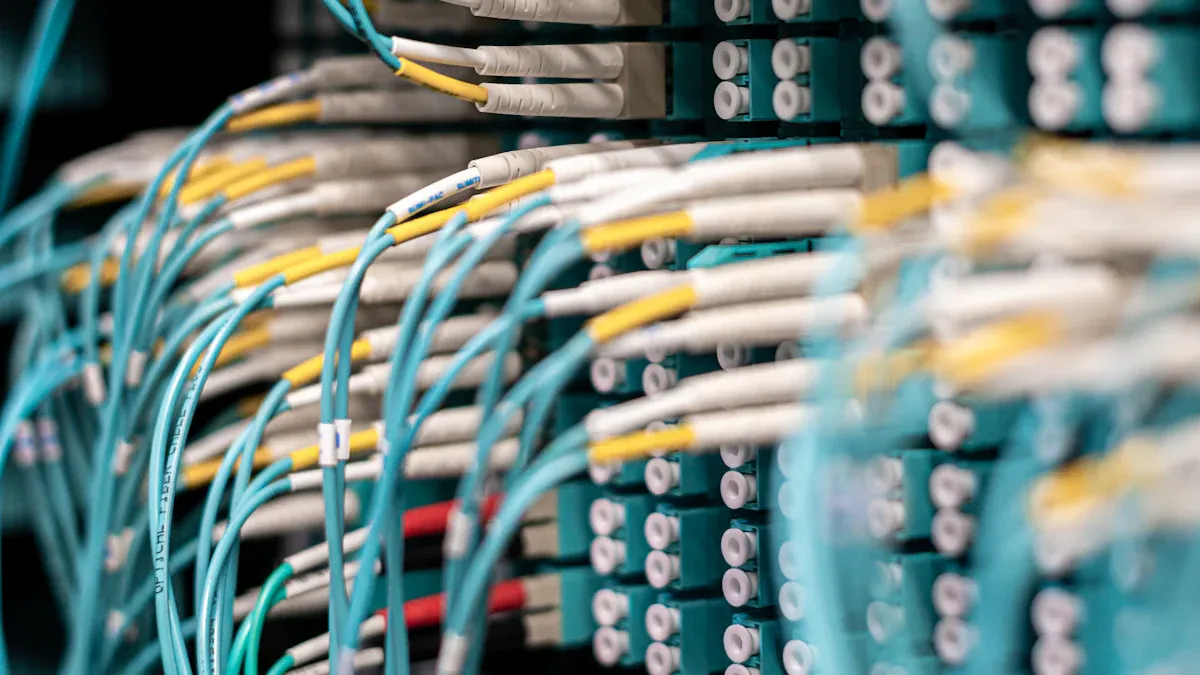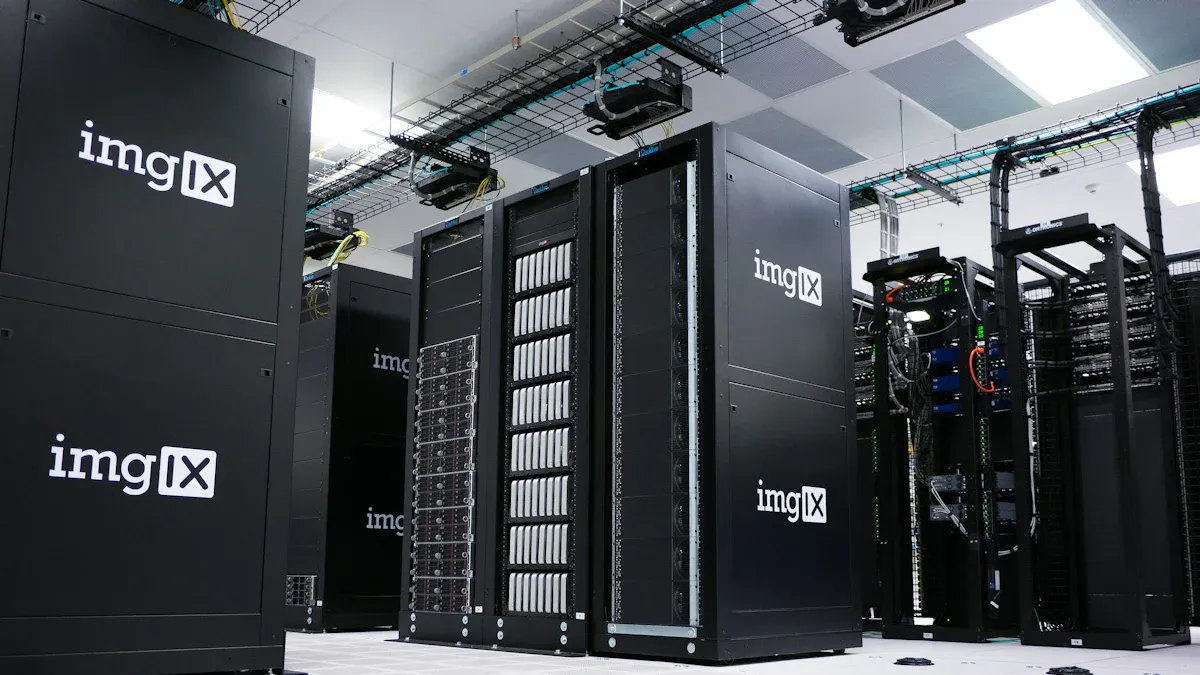
A Power Distribution Unit plays a pivotal role in maintaining the stability of IT infrastructure. Selecting the right unit ensures efficient power allocation, reduces downtime risks, and supports future scalability. Reliable power management safeguards equipment from overloads and surges, enabling businesses to optimize operations while meeting the growing demands of modern technology.
Key Takeaways
- Picking the right Power Distribution Unit (PDU) is important for good power use and future growth in IT systems.
- Think about what your space needs, like size and power use, to choose a PDU that works best for your devices.
- Features like checking power from far away and changeable designs make work easier and prepare your power setup for the future.
Types of Power Distribution Units

Choosing the right Power Distribution Unit (PDU) begins with understanding the various types available. Each type serves specific purposes and offers unique features tailored to different IT infrastructure needs.
Basic Power Distribution Units
Basic PDUs provide a straightforward solution for distributing power to multiple devices. These units lack advanced features but excel in simplicity and reliability. They are ideal for environments where power monitoring or remote management is unnecessary. Basic PDUs often serve as entry-level options for small-scale setups or non-critical applications.
Metered Power Distribution Units
Metered PDUs include built-in displays that show real-time power consumption. This feature allows IT administrators to monitor energy usage directly at the unit. By providing visibility into power draw, metered PDUs help prevent overloads and optimize energy efficiency. These units are particularly useful in data centers where precise power management is essential.
Monitored Power Distribution Units
Monitored PDUs take power management a step further by offering remote monitoring capabilities. Administrators can track power usage and environmental conditions, such as temperature and humidity, through a network interface. This functionality enables proactive management and helps identify potential issues before they escalate. Monitored PDUs are well-suited for facilities requiring constant oversight of power distribution.
Switched Power Distribution Units
Switched PDUs combine monitoring with the ability to control individual outlets remotely. This feature allows administrators to reboot devices, manage power allocation, and shut down non-essential equipment during emergencies. Switched PDUs enhance operational flexibility and are ideal for dynamic environments where remote control is critical.
Modular Power Distribution Units
Modular PDUs offer unparalleled scalability and adaptability. These units can adjust to changing power demands, making them suitable for dynamic IT environments. Their design allows for straightforward reconfiguration without specialized training, enhancing operational efficiency. The following table highlights the key benefits of modular PDUs:
| Feature | Benefit |
|---|---|
| Adaptability | Modular systems can easily adjust to changing power demands. |
| Reconfiguration | Straightforward reconfiguration enhances operational efficiency. |
| Flexibility | Maximizes scalability for facilities anticipating growth. |
| Energy Efficiency | Reduces overall energy consumption, contributing to cost savings. |
| Redundancy | Accommodates two independent infeed sources, reducing enclosure costs. |
These features make modular PDUs an excellent choice for organizations prioritizing flexibility and future-proofing.
Network-Capable Power Distribution Units
Network-capable PDUs integrate seamlessly with IT management systems, providing advanced monitoring and control features. These units support remote access, enabling administrators to manage power distribution from anywhere. Network-capable PDUs also offer detailed analytics, helping organizations optimize energy usage and reduce costs. Their flexibility and scalability make them indispensable for large-scale operations and facilities anticipating growth.
Factors to Consider When Choosing a Power Distribution Unit
Selecting the right Power Distribution Unit (PDU) involves evaluating several critical factors to ensure it aligns with the specific needs of an IT infrastructure. These considerations help optimize power management, improve operational efficiency, and support future scalability.
Facility Size and Layout
The size and layout of a facility significantly influence the choice of a PDU. Large facilities often prioritize minimizing costs and maximizing floor space. In such cases, basic or metered PDUs may suffice, as they provide reliable power distribution without unnecessary features. However, switched PDUs can be advantageous for reducing downtime by enabling remote control of individual outlets.
For smaller facilities or remote locations, monitored or switched PDUs offer distinct benefits. They allow administrators to track power consumption remotely, reducing the need for on-site IT staff visits. This capability not only saves costs but also ensures efficient power management in compact spaces.
Tip: When planning PDU placement, ensure sufficient space in cabinets. Most setups require two PDUs, each connected to separate power supplies for redundancy.
Power Load and Capacity Requirements
Understanding the power load and capacity requirements of an IT infrastructure is essential. Overloading a PDU can lead to equipment failure, while underutilizing it results in wasted resources. Administrators should calculate the total power consumption of all connected devices and select a PDU with a capacity that exceeds this value by a safe margin.
PDUs with built-in metering or monitoring capabilities provide real-time insights into power usage. These features help prevent overloads and ensure that the infrastructure operates within safe limits. For facilities with fluctuating power demands, modular PDUs offer scalability, allowing capacity adjustments as needed.
Installation and Mounting Options
The installation and mounting options of a PDU play a crucial role in its integration into an IT environment. Rack-mounted PDUs are the most common choice for data centers, as they fit seamlessly into standard server racks. Vertical or horizontal mounting options provide flexibility, enabling administrators to optimize space utilization.
Wall-mounted PDUs are suitable for smaller setups or non-rack environments. These units offer a compact solution for distributing power without occupying valuable rack space. Regardless of the mounting option, ensure that the PDU is easily accessible for maintenance and monitoring.
Power Management and Scalability Features
Effective power management and scalability are vital for future-proofing an IT infrastructure. PDUs with advanced monitoring and remote management capabilities allow administrators to track power usage, identify inefficiencies, and make data-driven decisions. These features are particularly valuable in dynamic environments where power demands frequently change.
Scalability is another critical consideration. Modular PDUs provide the flexibility to expand or reconfigure power distribution as the infrastructure grows. This adaptability reduces the need for costly replacements and ensures that the PDU remains relevant as technology evolves.
Note: Investing in a PDU with advanced features may involve higher upfront costs, but the long-term benefits in terms of efficiency and scalability often outweigh the initial expense.
Additional Features to Evaluate in a Power Distribution Unit

Plug and Outlet Types
The compatibility of plug and outlet types is a critical consideration when selecting a Power Distribution Unit. Different IT environments require specific configurations to match the power needs of connected devices. PDUs typically offer a variety of outlet types, such as C13, C19, or NEMA, to accommodate diverse equipment. Administrators should evaluate the plug types used by their servers, switches, and other hardware to ensure seamless integration.
Tip: Choose a PDU with a mix of outlet types to support current devices while accommodating future upgrades.
Monitoring and Remote Management Capabilities
Advanced monitoring and remote management capabilities enhance operational efficiency. PDUs equipped with network interfaces allow administrators to track power usage, monitor environmental conditions, and control outlets remotely. These features reduce the need for on-site intervention and enable proactive management. Facilities with high uptime requirements benefit significantly from PDUs that offer real-time alerts and detailed analytics.
Environmental Tolerance and Operating Temperature
Environmental tolerance plays a vital role in ensuring the reliability of a Power Distribution Unit. IT environments often experience fluctuating temperatures and humidity levels, which can impact equipment performance. PDUs designed to operate within a wide temperature range provide greater stability. Units with robust environmental tolerance minimize the risk of failure in challenging conditions, such as high-density server rooms or remote locations.
Future-Proofing and Expandability
Future-proofing ensures that a PDU remains relevant as technology evolves. Modular PDUs offer expandability, allowing organizations to adapt to changing power demands without replacing the entire unit. Features like hot-swappable components and scalable designs reduce downtime during upgrades. Investing in a PDU with expandability options supports long-term growth and minimizes operational disruptions.
Note: Prioritize PDUs with modular designs to accommodate future infrastructure changes efficiently.
Selecting the right Power Distribution Unit ensures efficient power management and long-term scalability. Understanding PDU types and evaluating key factors like capacity, monitoring, and expandability are essential. Aligning the PDU choice with specific IT infrastructure needs guarantees reliability. Use this guide to make informed decisions and optimize your power distribution strategy.
FAQ
What is the difference between a basic PDU and a switched PDU?
A basic PDU distributes power without advanced features. A switched PDU allows remote control of individual outlets, enabling administrators to reboot devices or manage power allocation.
How can modular PDUs benefit growing IT infrastructures?
Modular PDUs provide scalability by allowing easy reconfiguration or expansion. This flexibility supports growing power demands without requiring a complete replacement of the unit.
Are network-capable PDUs necessary for small IT setups?
Network-capable PDUs are not always essential for small setups. However, they offer remote monitoring and control, which can improve efficiency and reduce on-site management needs.
Post time: May-16-2025

